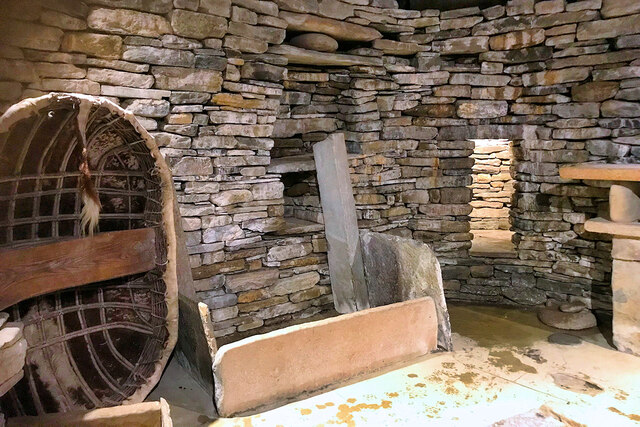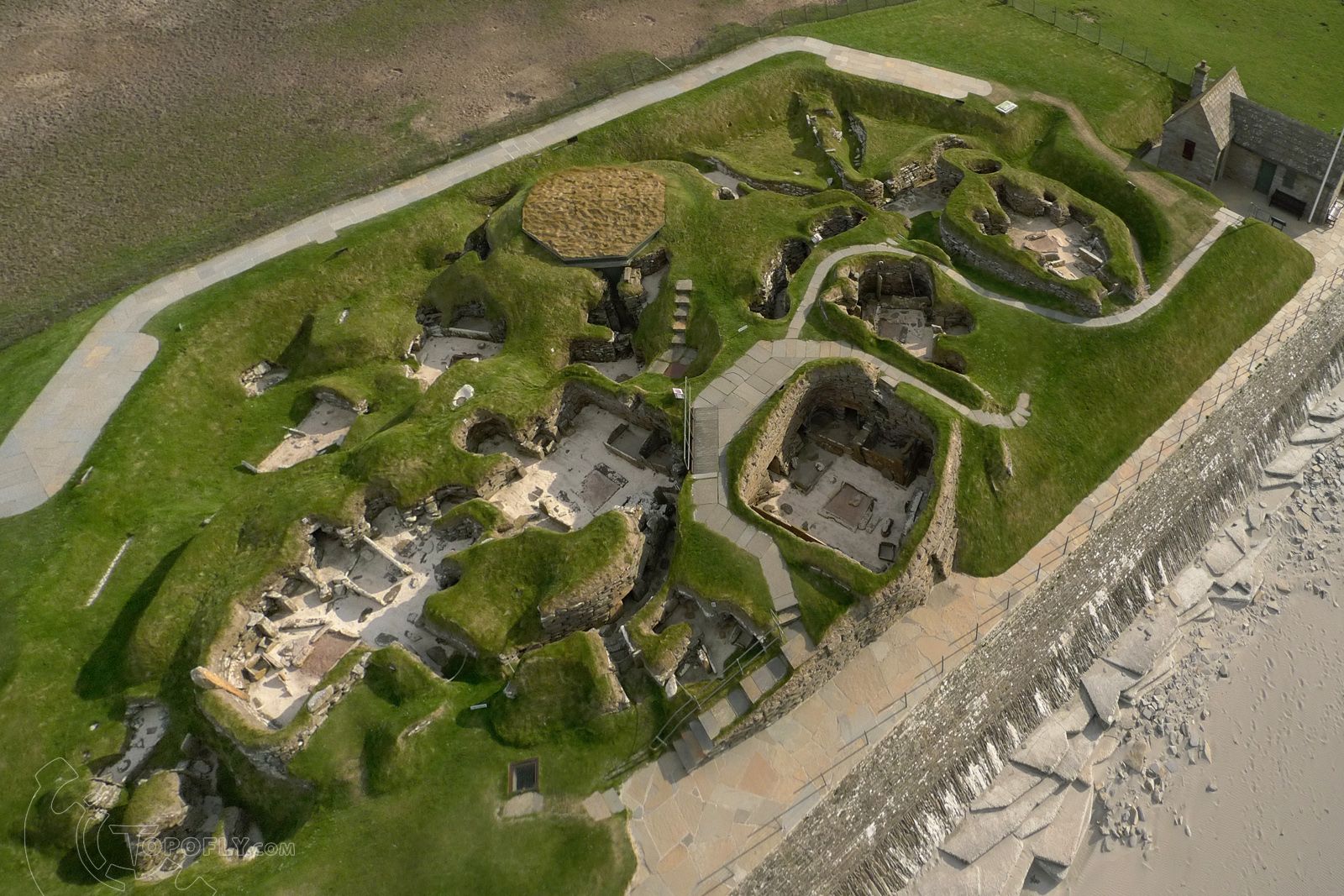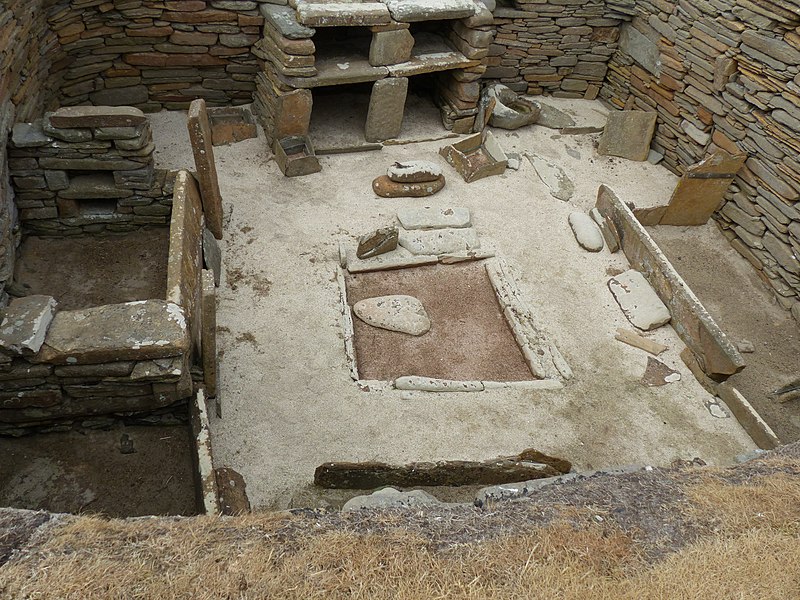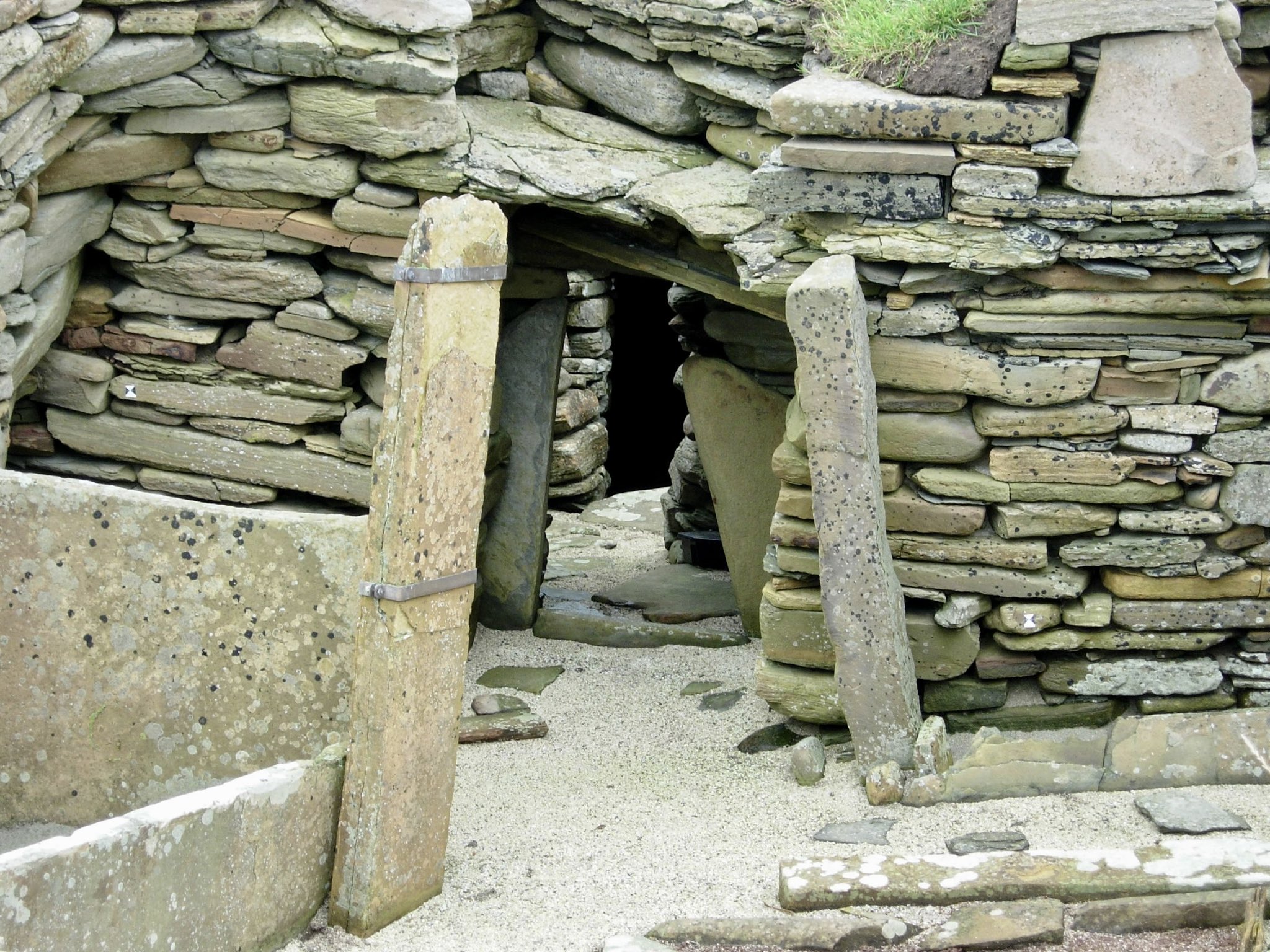Nestled on the rugged coast of Orkney, Scotland, Skara Brae stands as one of the most remarkable Neolithic sites in the world. Dating back over 5,000 years, this village was inhabited for about six centuries, making it older than the Pyramids of Egypt and many ancient Greek and Roman sites. Today, Skara Brae offers an exceptional opportunity to explore the daily life of its Neolithic inhabitants, through a replica house near the visitor centre that vividly recreates their living conditions.
A Glimpse into Neolithic Living
Skara Brae consists of a series of single-roomed houses, each connected by a roofed passageway that shielded the residents from the harsh elements. The village’s layout reflects a sense of practicality, with each house strategically designed for warmth, shelter, and convenience. The rooms were built using local stone, with thick walls that helped to insulate against the cold and damp conditions typical of the Orkney climate. One house, in particular, is believed to have functioned as a workshop, a space where villagers engaged in crafting activities, highlighting the community’s craftsmanship and the blend of practicality and creativity in their domestic spaces.

Unlike grand ceremonial structures such as temples, Skara Brae offers a rare and intimate glimpse into the everyday lives of ordinary people. The design of the village emphasizes survival and social cooperation. Each house features a central hearth, essential for both cooking and heating. Stone cupboards embedded in the walls allowed for food storage, while niches and recesses served as sleeping areas or places to store personal items. This simple yet effective architecture reveals the ingenuity of Neolithic people in adapting their environment to their needs.
Technological Ingenuity and Sanitation
Skara Brae’s remarkable state of preservation is largely due to its burial under sand for centuries, protecting it from the elements until a storm uncovered the site in 1850. This layer of sand helped to preserve many aspects of daily life, including features that suggest a level of sanitation uncommon for its time. Some houses at Skara Brae have drains, which could have been used as primitive latrines, offering evidence of an early form of waste management. This suggests that the inhabitants were not only adept at creating practical living spaces but were also concerned with hygiene and cleanliness, advancing further than many contemporary Neolithic communities.

Agriculture, Livestock, and Craftsmanship
The residents of Skara Brae lived in a self-sustaining community, surrounded by fertile farmland where they grew crops and raised livestock. This agricultural base ensured their survival in a harsh environment and allowed them to focus on various aspects of social and cultural life. Evidence of crafting activities, such as the production of pottery, jewelry, and other ornamental objects, demonstrates the villagers’ artistic skills. The finely crafted pieces found at the site reveal a culture that valued both functionality and aesthetic beauty, suggesting that the people of Skara Brae not only lived practical lives but also had a rich cultural and artistic heritage.

A Lasting Legacy
Today, Skara Brae stands as one of the best-preserved Neolithic villages in Europe, offering unparalleled insights into the lifestyle of its people. The preservation of the village provides a unique opportunity to understand how early humans engaged with their environment, adapted to challenging conditions, and developed social systems that allowed them to thrive. The site continues to inspire researchers and visitors alike, offering a rare and intimate look into the Neolithic past. Through ongoing research and exploration, Skara Brae continues to provide invaluable information about the social, technological, and artistic achievements of ancient communities, leaving a lasting legacy for future generations to study and appreciate.


